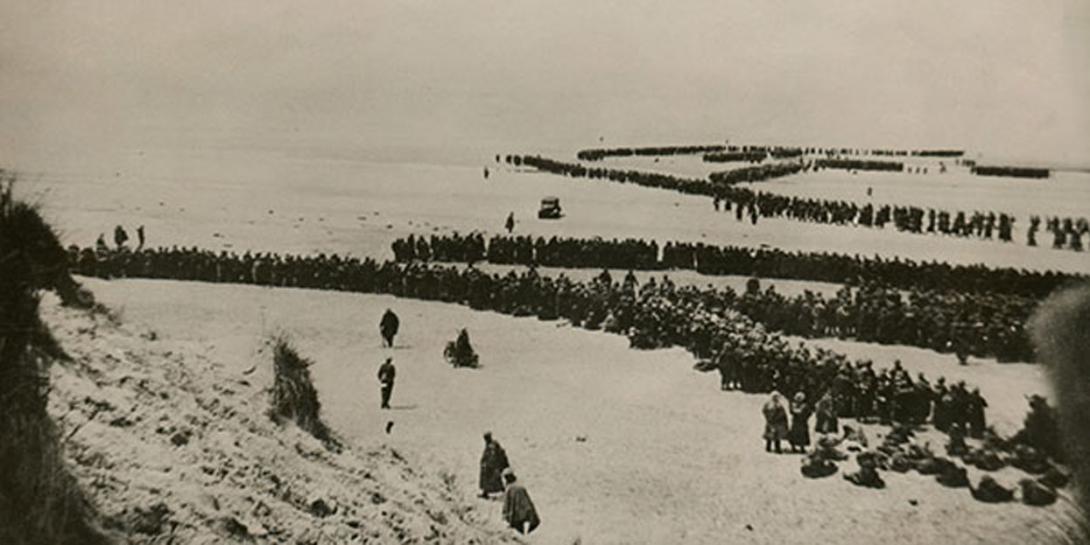CIA Remains Tied to the Industry
Charged with providing national security information to the nation, the U.S. Central Intelligence Agency, or CIA, has had a long history of partnering with the industry to solve challenges. That need has not diminished, said Randy Burkett, staff historian from the CIA’s Center for the Study of Intelligence.
Burkett, speaking at a recent Foundation for Innovation and Discovery (FINND) event, walked attendees through a few of the agency’s historically interesting challenges in which the industry came to its aid, beginning at the start of World War II.
Around the time of the evacuation of Dunkirk in May/June 1940, U.S. President Franklin Roosevelt questioned if Britain could successfully hold off Nazi Germany. Although the United States had established pathways for information, the channels were separated and did not provide the full strategic picture.
“Let’s think about who is informing the president of the United States [then],” Burkett said. “We have the military, we have Army attachés, Naval attachés. The Army and the Navy both have developed signals intelligence at that time. We have the FBI … foreign services officers and State Department officers around the world, and … people like Ambassador Joseph Kennedy in London and Ambassador Joseph Grew in Tokyo.”
These sources provided political, economic and military intelligence. “[But] they didn't work together,” Burkett emphasized. “They were stovepiped and they wouldn’t cooperate. It was so bad that the Army would come to the White House to deliver their signals intelligence information on Monday, and the Navy would come on Tuesday. And while everyone knew what was coming, we didn’t know enough to be able to fight this war."
President Roosevelt turned to William Donovan, a Republican millionaire, New York attorney and Medal of Honor awardee from World War I. Burkett relayed that in the fall of 1940, the president asked Donovan to find the answers to two questions: Would the British be able to hold off Nazi Germany? and When the United States got involved in the war, did it have the necessary intelligence platform?
Kennedy had told Roosevelt he did not believe Britain would be able to hold off Nazi Germany after the evacuation of Dunkirk and recommended that the United States find accommodation with the Nazis, Burkett stated.
“So Donovan goes to England, and the British are thrilled to see him,” the historian shared. “He comes back and tells the president that he believes the British can hold if they're provided enough assistance. And that's the start of the Lend-Lease program.”
Donovan also informed Roosevelt that the United States did not have a sufficient intelligence organization and suggested he head up a new organization, the Office of the Coordinator of Information (OCI), which became the Office of Strategic Services (OSS), the precursor to the CIA, Burkett said.
As the OCI, Donovan gained strategic information, the missing intelligence link that the United States needed. “He starts reaching out to the client list he had at his law firm. People who are in shipbuilding, aircraft production, petroleum, oil, lubricants and ball bearings,” the historian continued.
“The fact is that … 90 percent of the information needed for the [1942] Operation Torch landings [in Northern Africa] came from U.S. businesses,” Burkett noted. “All of the information about the railroads, the highways, the docks, the borders, channels, the reefs, all of that information is available within the U.S. business community, within professional journals and academic journals."
In another case, the private sector helped the CIA recover part of a sunken Soviet submarine in 1968. The K-129 sank 1,500 miles northwest of Hawaii, Burkett explained. And while the Soviets knew they had lost the submarine, they did not know exactly where it was. “That submarine had nuclear missiles on board. It had atomic torpedoes on board and cryptologic gear,” he noted. “And the CIA gets the mission to go get it. Now, that submarine weighs 1,750 tons and is sitting in deeper than the Titanic. We know that when we get it, it's probably going to be highly radioactive.”
The agency decided to build a huge ship with a robot arm that could reach three miles underwater, he stated.
“Can you even imagine the challenges of this? The heaviest lift of all times, three miles under water,” Burkett said. “This is something that the CIA could never do on its own. We can only do it by reaching out to experts in the private sector. And sometimes when you want to hide something, you go big with it and go public.”
The agency turned to Howard Hughes—the eccentric billionaire who had been involved in deep-sea oil drilling—to be the public face and financier of the program, Burkett explained. They built the $324 million ship, the USNS Hughes Glomar Explorer, and were able to recover one-third of the submarine before the effort was leaked to the press. The Russians then issued a démarche, threatening that if the United States continued to pursue the recovery of the rest of the submarine, Russia would consider it an act of war, Burkett clarified.
“So we never go back for it,” he noted.
And for the first time, the CIA used a specific reply to all the questions about the submarine recovery: the "We can neither confirm nor deny" response, now referred to as the Glomar response, named after the recovery ship, Burkett said.
These days, the agency’s not-for-profit venture capital fund, In-Q-Tel, develops advanced technologies for the CIA and the intelligence community and is the best place for the private sector to become involved with the agency, Burkett stated. “We actively look for [companies] to bring us technologies we can invest in,” he noted. “We regularly turn to private sector, and we are having to turn a lot right now given the challenges set up by ubiquitous surveillance.”



Comment
This was an excellent event.
This was an excellent event. Kudos to the CIA for letting their historian talk to us! Here's the Wikipedia article on the submarine raising, aka Project Azorian: https://en.wikipedia.org/wiki/Project_Azorian
And, the process keeps going
And, the process keeps going through In-Q-tel.
Comments